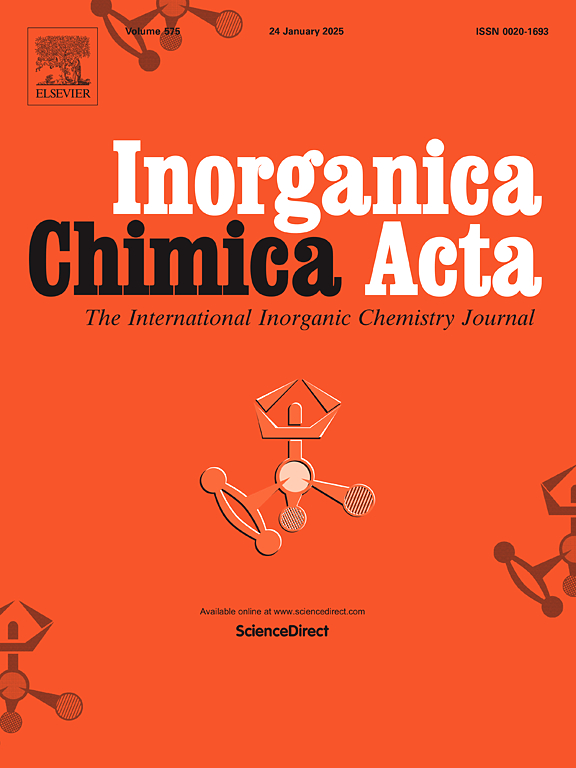A chemosensing approach for the detection of Cu2+ ion using benzothiazole based probe and its applications in anticancer studies
IF 2.7
3区 化学
Q2 CHEMISTRY, INORGANIC & NUCLEAR
引用次数: 0
Abstract
The current research work describes the design and synthesis of a novel chemosensor
(2-(benzo[d]thiazol-2-yl)-6-(((4-bromophenyl)imino)methyl)phenol) (HBPA) for the detection of metal ions. Formation of the probe (HBPA) was confirmed by using various spectroscopic techniques. The sensing ability of HBPA with various metal ions were examined by colorimetric and fluorimetric techniques and the obtained results confirmed the selective detection of Cu2+ ions by the probe with the limit of detection of 2.0300 × 10−4 M. The probe exhibited good binding constant with the Cu2+ ion as 3.6957 ± 0.33 × 104 M−1. Spectral results revealed 1:2 stoichiometry in the complex HBPA-Cu2+ during interaction between metal and probe. Experimental observations on binding of the probe with copper ions was corroborated with density functional theory (DFT). Further, the cytotoxic nature of the probe and probe-Cu2+ have been examined with HeLa (human cervical cancer cells) and HepG2 (human liver cancer cells) and the obtained results revealed that the compounds possessed good cytotoxic activity compared with the positive control doxorubicin. HBPA acts as a good chemosensor for the detection of Cu2+ ion as well as exhibits good cytotoxic activity towards the HepG2 and HeLa cell lines.

求助全文
约1分钟内获得全文
求助全文
来源期刊

Inorganica Chimica Acta
化学-无机化学与核化学
CiteScore
6.00
自引率
3.60%
发文量
440
审稿时长
35 days
期刊介绍:
Inorganica Chimica Acta is an established international forum for all aspects of advanced Inorganic Chemistry. Original papers of high scientific level and interest are published in the form of Articles and Reviews.
Topics covered include:
• chemistry of the main group elements and the d- and f-block metals, including the synthesis, characterization and reactivity of coordination, organometallic, biomimetic, supramolecular coordination compounds, including associated computational studies;
• synthesis, physico-chemical properties, applications of molecule-based nano-scaled clusters and nanomaterials designed using the principles of coordination chemistry, as well as coordination polymers (CPs), metal-organic frameworks (MOFs), metal-organic polyhedra (MPOs);
• reaction mechanisms and physico-chemical investigations computational studies of metalloenzymes and their models;
• applications of inorganic compounds, metallodrugs and molecule-based materials.
Papers composed primarily of structural reports will typically not be considered for publication.
 求助内容:
求助内容: 应助结果提醒方式:
应助结果提醒方式:


